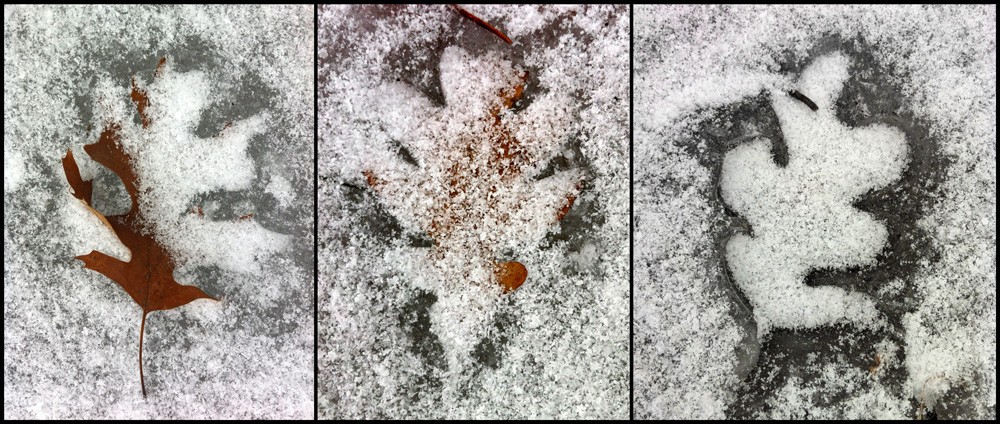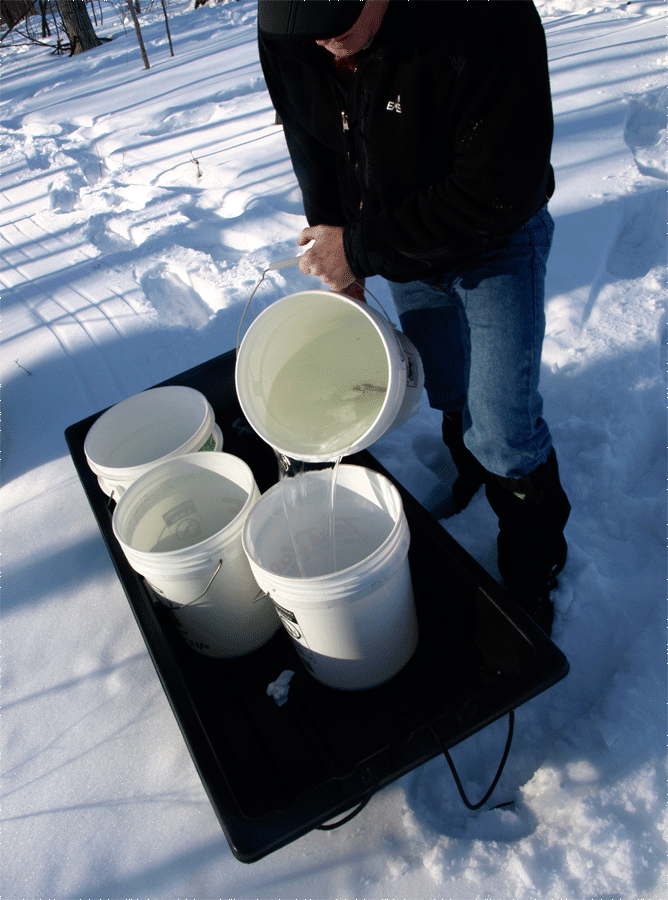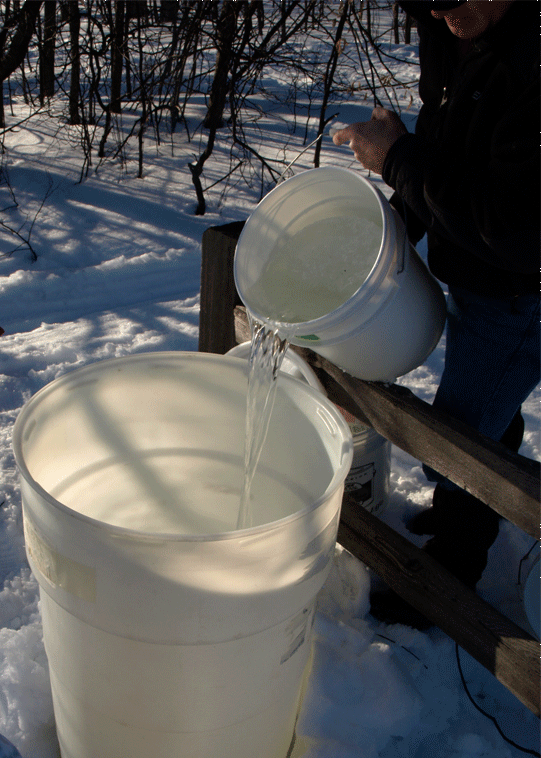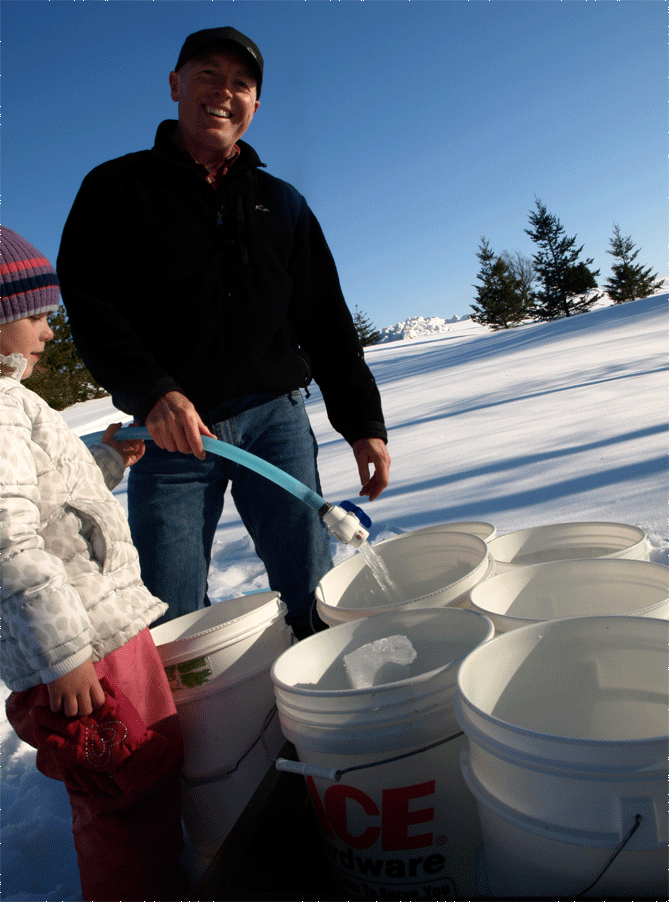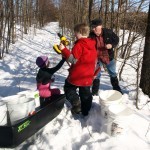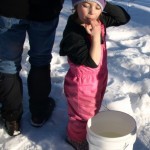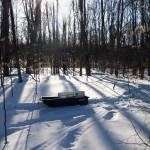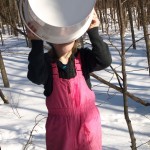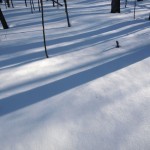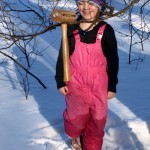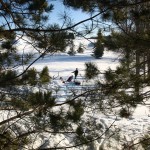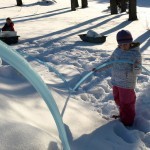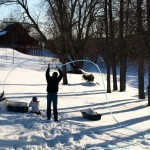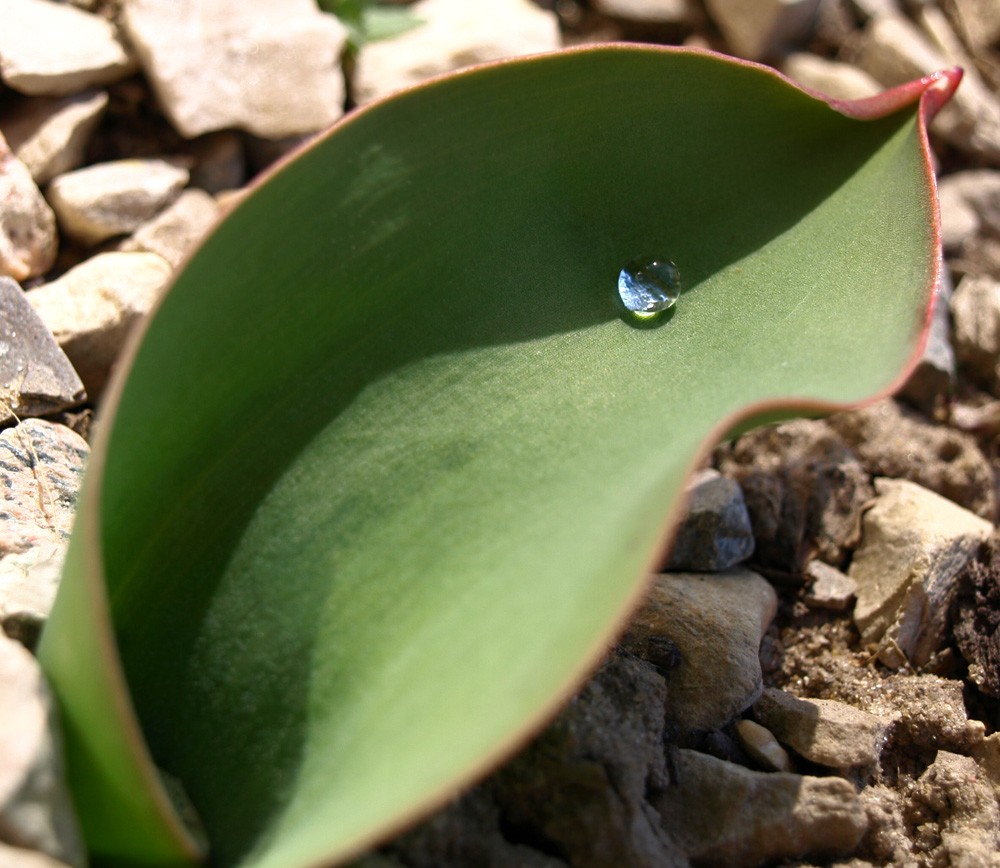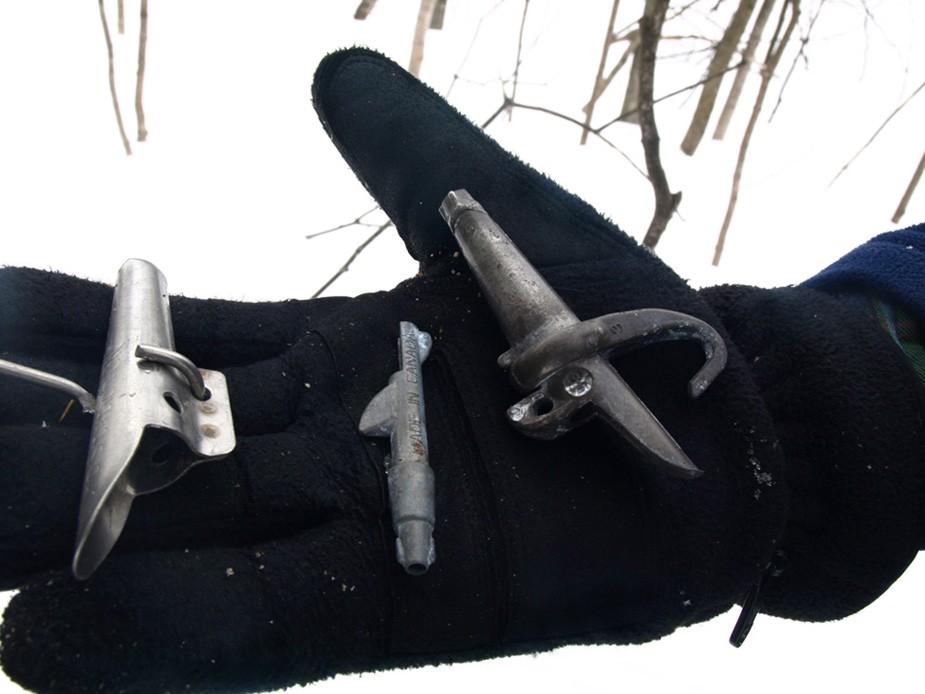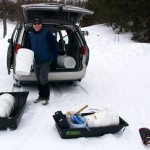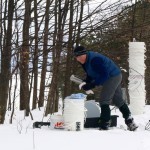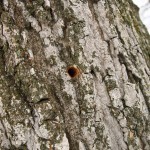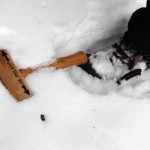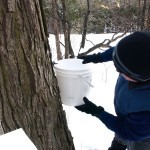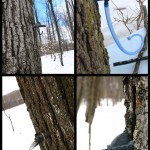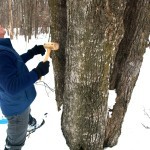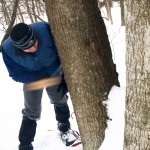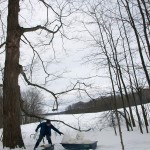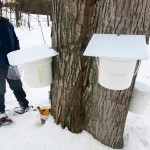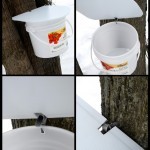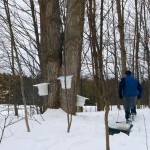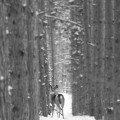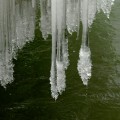Maple Sugaring Part 2, Sap Collecting
- At April 04, 2013
- By Nate
- In Local Happenings
 0
0
“A for sweetness, C for fullness.” These are the grades most of the sap buckets received from my friend and co-worker Matt’s kids, Sam and Abby, the day I joined them. While this impromptu grading system wasn’t scientific, it was fun to hear the grades called out, followed by the telltale clunk of the bucket lids closing as the kids moved from tree to tree. While Sam and Abby were honing their maple sommelier skills, Matt poured sap in to the waiting buckets on the sled and re-drilled a few holes for the occasional loose spile.
Collecting sap can probably be used as a metaphor for many things but what struck me was how this process starts, quite literally, with a single drop in the bucket and ends with, not an ocean, but definitely gallon upon gallon of the sticky stuff.
The drip, drip, dripping over the course of a day or two (if the conditions are right: freezing at night & 40 during the day) turns into several gallons of sap hanging off the tapped trees. In Matt’s system, the tree buckets are emptied into pails on a sled that he moves, with some effort, from tree to tree. When the sled is full, the sap is poured into a 55-gallon drum at the edge of the sugar bush and is then dragged back to the trees for more sap until it’s all collected. Matt’s sugar bush is high up on a hill so he takes advantage of the change in elevation and runs the sap downhill from the drum through a hose to buckets below. The buckets are sealed and loaded into the back of his car. Matt is always adjusting his system and has designs on installing a “half barrel” of sorts right in the back of his car for sap season, which would eliminate the need for loading and unloading five-gallon buckets of sap…. but where would Sam and Abby sit? I wouldn’t be surprised if a dedicated vehicle is in the future too…. because, for Matt, this is definitely a family affair. Stay tuned for sap-boiling and syrup-canning!
Look Through Our Lens – The Week of March 21
- At March 21, 2013
- By Nate
- In Local Happenings
 2
2
Photo descriptions (L to R):
1) Mapping the Week @Brew- Front Street, Traverse City 2) Morning Lighted Clancy Park – Orchard Heights, Traverse City 3) Light Time at InsideOut Gallery – Warehouse District, Traverse City 4) Night Light – Northwestern Michigan College, Traverse City 5) Free Popcorn (Snow) – Munson Medical Center, Traverse City 6) Big Trees Tiny Skiis – The Heritage Trail, Glen Haven 7) Snow Love – parking lot, Traverse City 8) Tunnel Vision – Brian’s Mind, Traverse City 9) Unnatural Evening – Bryant Park, Traverse City
Sputtering Spring
- At March 20, 2013
- By Nate
- In Local Happenings
 2
2
To my eyes spring appears to be a grand experiment that everybody watches and knows the result but nobody really knows how it’s going to happen. Sure, we have a general idea that eventually it will get warmer and greener; but, like starting up the old lawn mower each season, you don’t ever quite know how many sputtering attempts are needed before it roars into action. For nature this can be some risky business, just ask the cherry trees about last year.
For my part, I’m going to go ahead and say it – I’m a gawker. I love the little battles (and the big ones) that are waged as winter sputters out and spring sputters in. In fact, I’ve been watching a good little sputter war in my front yard. Warmth that has gathered in the sun-pocket on my south-facing wall pushes the snow line out into the yard and encourages a brave tulip plant or two to poke their heads out. The snow/grass battle line moves a good amount on sunny days but is held firm on the colder ones. When it snows the line moves back to the wall and the snow again covers up the grass and brave tulips. Fear not for the tulips though, their warped canoe shaped leaves appear to be designed to handle a bit of frost or snow. As temps heat up the snow, bits of frost become droplets of water and roll down the leaf to the plant’s base and roots. Amazing to watch this brave plant’s beautiful design carry out its function in the middle of a sputter war!
Maple Sugaring Part 1, Tree Tapping
- At March 13, 2013
- By Nate
- In Local Happenings
 6
6
This time of year, for many, is Michigan at its ugliest… it is, after all, mud season. The attraction of bright, sunny skies and warm beaches found in the southern reaches of our country is no wonder in contrast to the long stints of cold, gray skies and the wet, sloppy mix of snow, rain, and mud found around here, but as Emerson said there is beauty in all seasons:
“To the attentive eye, each moment of the year has its own beauty, and in the same field, it beholds, every hour a picture which was never seen before, and which shall never be seen again.”
If you do stick around this time of year, I suggest finding a way to get involved with maple-syrup production. Grab the kids and head to a maple-syrup pancake breakfast at a place like Wagbo Farm, harvest from one of your own trees, or find a friend who’s already into it to tag along with, like I did. If you’ve been cooped up inside or find yourself generally out of touch with nature maple sugaring will pull you right back in or maybe even put you in touch for the first time. There are a lot of different-size operations out there but they all start by tapping trees at the magical time when winter is on the cusp of spring. Days need to be below freezing at night and above freezing (ideally in the 40s) during the day for sap to flow, be collected, and then boiled down into sap. There is a ton of boiling involved- sap-to-syrup ratio is 40 gallons to 1 gallon.
Matt McDonough, a co-worker and friend, is allowing me to “help” him this season and I’ll share what I see in a series of posts. Matt’s put his operation together over the past six seasons in classic Northern Michigan style, utilizing networking, innovation, ingenuity, and good old-fashioned elbow grease. The trees he taps are on a friend’s property, his sap buckets are re-purposed frosting buckets, the bucket lids are scraps from a sign company, and he welded his own evaporator, to give you a sense of how he does things. He also does most of the work himself but does contract out some of the heavy lifting to his son Sam and daughter Abby who you’ll meet in another post.
The photos in todays post are from tree-tapping day. In all, we put in 37 taps and tried a variety of spouts – Matt is always experimenting. In his operation tapping involves drilling into a maple tree a couple of inches, tapping in a spout with a wooden hammer, and hooking a bucket with a lid to the spout. The spout directs sap from the tree’s xylem, where energy-rich, sugary sap is transported from the tree’s roots to its branches, into the collection buckets. The actual physiological explanation of how sap moves is a mystery to me but I couldn’t help but be awestruck that a stream of sap flows straight up a tree for several weeks a year and there’s so much of it
siphoning off a few gallons doesn’t hurt it a bit. Oh and if you are wondering if the holes hurt the tree, doesn’t seem to, we saw a bunch from previous seasons that had completely closed up and healed! Needless to say I left the woods that day even more of a tree geek than I already was.

